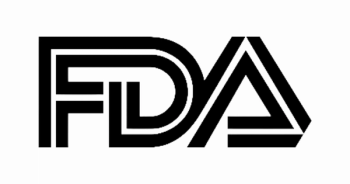
Peers & Perspectives in Oncology
- June I 2025
- Volume 3
Comparing Melanoma Immunotherapy Outcomes in Key Clinical Trials
During a live event, Ahmad Tarhini, MD, PhD, discussed key melanoma trials with varying survival and toxicity profiles.
This article is part 1 of a 2-part series from a Case-Based Roundtable event.
CASE SUMMARY
- A 78-year-old man with a history of stage III melanoma underwent surgical resection 12 years ago.
- The patient presented with fatigue and asthenia that limited his daily activities.
- ECOG performance status: 1
- Physical examination unremarkable
- Notable laboratory findings: lactate dehydrogenase level of 380 U/L (reference range, 110-240 U/L)
- CT imaging: pulmonary and hepatic nodules
- Brain MRI: no evidence of brain metastases
- Core needle biopsy of the largest hepatic lesion (2 cm): melanoma
Targeted OncologyTM: What are the landmark trials relevant to this patient with melanoma for his first line of treatment?
Ahmad Tarhini, MD, PhD: The pivotal studies that led to the approvals in the first-line setting are CheckMate 067 [NCT01844505],1 which tested ipilimumab [Yervoy] vs nivolumab [Opdivo], KEYNOTE-006 [NCT01866319],2 which tested pembrolizumab [Keytruda] vs ipilimumab, and RELATIVITY-047 [NCT03470922] of nivolumab/relatlimab [Opdualag] vs nivolumab.3 It is important to say that CheckMate 067 was nivolumab/ipilimumab vs nivolumab vs ipilimumab.
What were the response rates seen with these 3 regimens?
Looking at the objective response rates, these tend to be higher in CheckMate 067 while we're looking at KEYNOTE-006 and RELATIVITY-047. One thing to point out here is that the responses and the progression-free survival [PFS] as assessed on CheckMate 067 were assessed by investigators. The primary end point was investigator-assessed PFS, so the numbers are investigator assessed compared with BICR [blinded independent central review] in KEYNOTE-006 for pembrolizumab and BICR as well for RELATIVITY-047.
For example, in RELATIVITY-047, the response rate with nivolumab/relatlimab was 44% in the most recent update, but with nivolumab it was 34%, a 10–percentage point difference between nivolumab/relatlimab vs nivolumab. Similarly, when we look at CheckMate 067, and compare ipilimumab/nivolumab with nivolumab, it's roughly 10 percentage points between the 2 as well.
Can you discuss the survival results for these patients with melanoma?
Now the median PFS was 11.5 months with ipilimumab/nivolumab, 10.2 months with nivolumab/relatlimab, and...again, it's investigator assessed in CheckMate 067, and it's BICR for this assessment in RELATIVITY-047.
Interestingly, in RELATIVITY-047, the median PFS for nivolumab alone was 4.6 months [with] stricter assessment and reporting. One interesting observation is if we look at the HR, comparing ipilimumab/nivolumab vs nivolumab, the HR was 0.79 as reported independently in CheckMate 067, by comparison in RELATIVITY-047—and we do this with caution, we cannot do cross-trial comparison, etc—it's interesting that the number is also 0.79 for nivolumab/relatlimab vs nivolumab. So when we're looking in the context of the clinical trial itself, and looking at the comparator, the HRs are comparable.
When we look at the overall survival [OS], the median with ipilimumab/nivolumab was 72.1 months. With pembrolizumab it was 32.7 months, and with nivolumab/relatlimab it was 51.0 months. But the median is impacted by the duration of follow-up. The median follow-up on CheckMate 067 was 92.6 months. The longer we follow these patients, the longer they live, and the median OS will be obviously longer. With nivolumab/relatlimab, [median OS] is 51.0 months, and the median follow-up there was [19] months. We'll see with longer follow-up what the median will look like. But if we look at the OS HR with ipilimumab/nivolumab vs nivolumab, it's 0.84 on CheckMate 067, and it is 0.80 on RELATIVITY-047. Again, the numbers appear comparable by doing this cross-trial comparison. What it does is it provides more reassurance with regard to the use of nivolumab/relatlimab in the frontline setting, and that the data seem to be consistent when we look at the differences in response between nivolumab/relatlimab and nivolumab and the PFS and the OS.
How did the toxicities vary for these trials?
If we look at CheckMate 067 with ipilimumab/nivolumab, it is a more toxic regimen using the standard ipilimumab 3 mg/nivolumab 1 mg regimen.4 So the rate of grade 3/4 adverse events with ipilimumab/nivolumab was reported at about 55% and those leading to discontinuation at 36%. By comparison, this is less so with nivolumab alone and pembrolizumab alone and nivolumab/relatlimab in the middle, with the grade of 3/4 toxicities at 21% and those leading to discontinuation at 15%.
DISCLOSURES: Tarhini previously reported a consulting or advisory role forBristol Myers Squibb, Merck, Genentech/Roche, Novartis, Sanofi/Regeneron, Partner Therapeutics, Clinigen Group, Eisai, Bayer, Instil Bio, ConcertAI, BioNTech, AstraZeneca, and Nested.






































